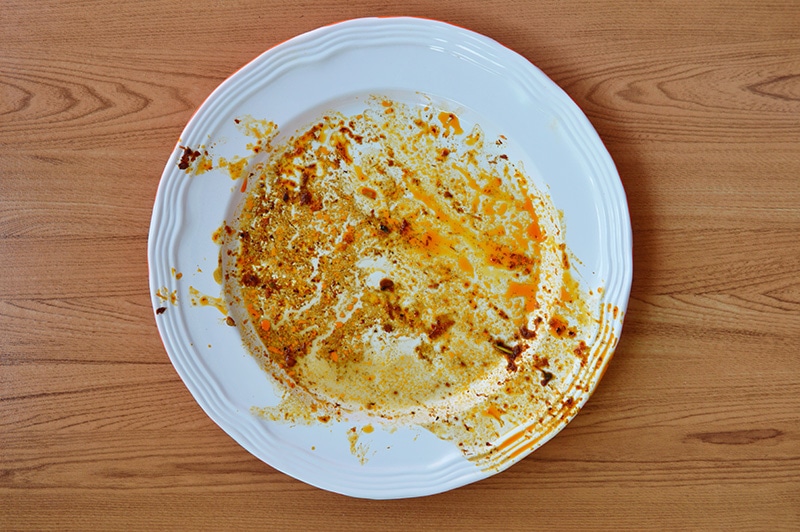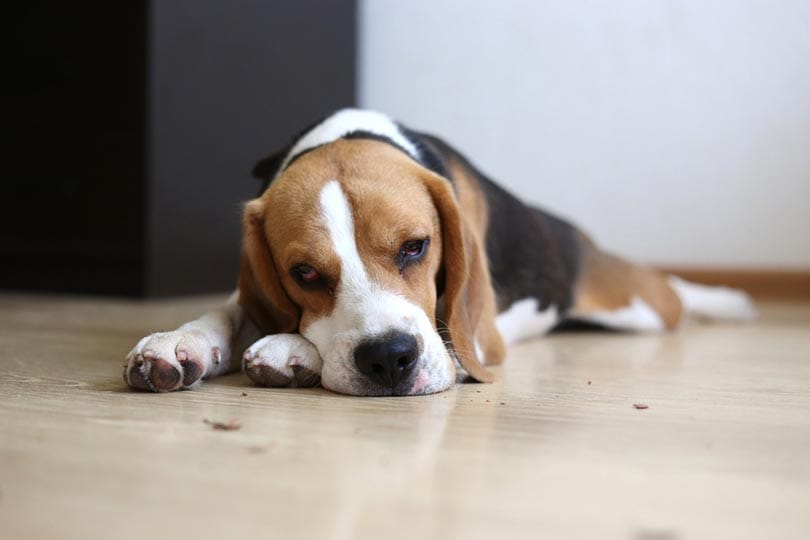What Size Tank Does a Bearded Dragon Need? Our Vet’s Advice & Care Tips
By Dr. Luqman Javed, DVM (Vet)
Updated on
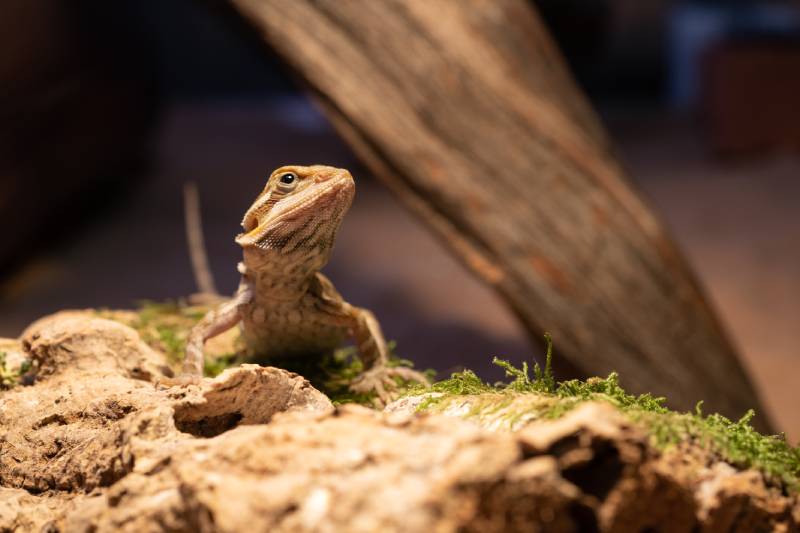
For the reptile enthusiast, a bearded dragon seems like an ideal pet. They’re relatively easy to care for, easily obtainable all over the world, often come with no legal restrictions for ownership, and are a joy to watch and care for. Males in particular are well known for their flashy “beard” displays, hence their name.
With all exotic pets, a crucial part of ownership is setting up an appropriate enclosure for your beloved pet. Many first time bearded dragon owners struggle to understand just how big of an enclosure they should purchase for their pet. As a general rule, a 75 gallon tank is a safe bet to house a single bearded dragon. Read on as we explain why this is a good size to opt for and what else you need to know when taking on a bearded dragon as a pet.
Bearded Dragon Tank Size
As mentioned, a 75 gallon tank is an excellent choice for a bearded dragon’s enclosure. However, keep in mind that dimensions matter. These gorgeous reptiles can easily attain a length of about 2 feet (at times, even more) so you would want a setup that’s both wide enough to allow for easy turning, and long enough for them to run around as well. The enclosure should also have sufficient height, as it’s needed not only for your pet’s comfort but to also set up a temperature and humidity gradient that is appropriate for your pet.
There is no harm in going for a bigger enclosure. In fact, a larger setup is highly recommended for your beardie. Ideally, spring for a tank that has the following dimensions:
- A length of at least 54 inches (approximately 137 cm)
- A depth of at least 30 inches (approximately 76 cm)
- A height of at least 35 inches (approximately 89 cm)
Going for a larger enclosure than this will allow you more options when it comes to items, decor, rocks, and reptile hammocks you can place in your tank.
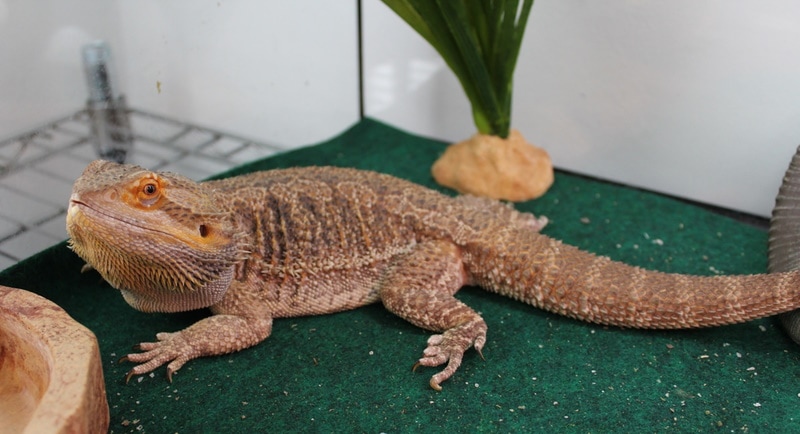
Reasons a Larger Tank Is Better
Often, new bearded dragon owners see a small reptile and think that it’s better to start “small” and only upgrade the tank as their bearded dragon goes. However, this approach to housing a bearded dragon isn’t recommended for several reasons.
- It isn’t economical. Although you might think that a smaller tank is cheaper, a bearded dragon grows rapidly. In a matter of just a month or two, you’ll inevitably be forced to upgrade to a larger enclosure. Given how dragons grow very rapidly in the first year of life, starting small usually ends up being more expensive, as you have to frequently upgrade.
- It’s difficult to maintain. Bearded dragons have a relatively wide ambient temperature range. Their enclosure also needs a warm (basking) area and cool area for sleeping in at night. Establishing such temperature zones in a small aquarium is extremely difficult, and is considered pretty much impossible. The same is true for their humidity requirements. Many bearded dragons presented to vets have been housed in poor husbandry conditions, with a small enclosure being a factor to their poor health.
- Changing enclosures is stressful. Changing your bearded dragon’s enclosure will undoubtedly be stressful for you. However, it will also be stressful for your dragon. A sudden change in their environment will make your beloved pet feel like they’re in a brand new place. Stressed individuals struggle to maintain a competent immune system, and are more prone to falling ill.
- Stunting concerns. If you’re too slow to keep up with your bearded dragon’s growth rate and don’t upgrade their enclosure quick enough, you may end up with a stunted pet. Stunting isn’t healthy for a pet and can lead to health issues down the road.
Does Tank Material Matter?
Bearded dragon enclosures usually come in one of three materials: glass, wood, PVC plastic, and plexiglass (a clear plastic). Generally speaking, all three are acceptable with each having some benefits and drawbacks.
Glass enclosures offer excellent visibility, but are often heavy and can shatter. Wooden enclosures have excellent thermoregulation, however may not be great for a very long time, as wood can sometimes degrade when repeatedly washed with soap and water. Plexiglass is inexpensive however may not offer the best view of your pet, and may sometimes appear scratched if scrubbed too hard during cleaning. PVC plastic is workable however it’s usually opaque and doesn’t offer a great viewing experience for pet owners, and is usually utilized by breeders.
The prevailing opinion is that glass or wooden enclosures are the best. Regardless of what material you choose, you’ll need an appropriate lid for the enclosure.
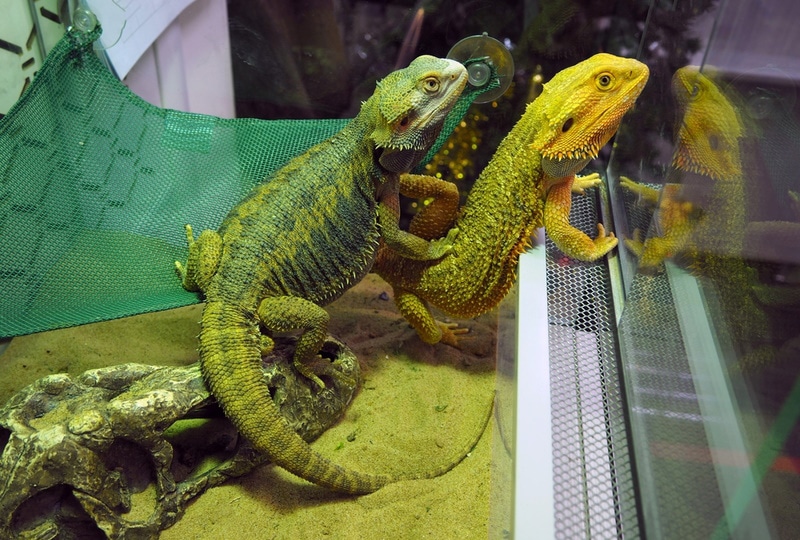
Other Bearded Dragon Essentials
In addition to the aforementioned enclosure, you’ll also need a few other essentials to complete your pet’s enclosure. These include the following:
- Lighting (UVB tube light and 75w UVA basking light). These are placed together to mimic “sunlight” and a basking spot for your bearded dragon.
- Thermometers. Required to measure the ambient temperature. Two are recommended, one placed at each end of your dragon’s enclosure
- Hygrometer: To measure humidity
- Reptile carpet: This is the preferred substrate for your dragon. Sand isn’t recommended; enthusiastic eaters may swallow sand and become impacted.
- Bath dish.
- Branches, hammocks, rocks, half-Logs, and plants to set up a landscape and provide hiding spots.
- A smaller, spare aquarium: This is recommended to monitor your bearded dragon during feeding time, especially when they’re young. It can also be used as a transport unit to take your pet to the vet.
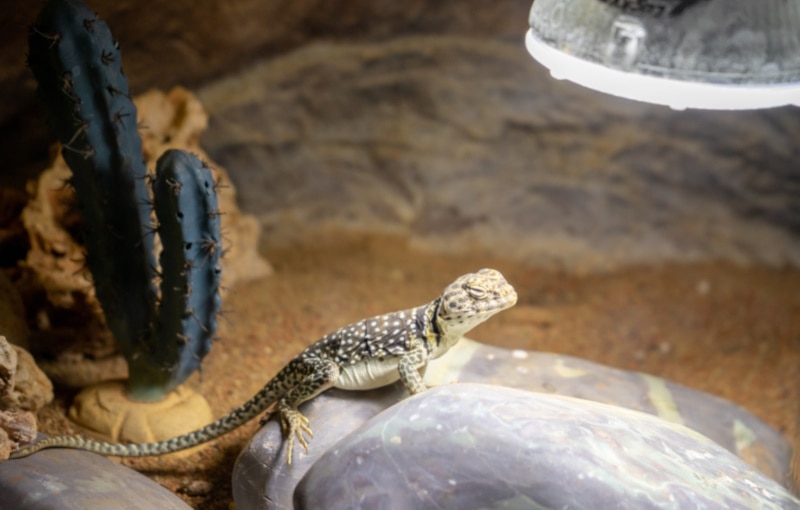
Normal Temperature and Humidity
Like all cold-blooded animals, bearded dragons rely on their ambient temperature to regulate their metabolism. Their acceptable ambient temperature range is 77–89.6°F (25–32°C), but the hot basking area needs a higher temperature of 95–100.4°F (35–38°C). Your bearded dragon also needs a cool nighttime area with a temperature range of 71.6–77°F (22–25°C).
The humidity requirements for bearded dragons are 20-30% for a healthy adult that’s not undergoing ecdysis (shedding). Juveniles or dragons that are undergoing ecdysis need much higher humidity levels (at around 35-40%).
Conclusion
A 75 gallon rectangular tank serves as a good enclosure for a bearded dragon. Larger setups are much preferable and offer additional benefits than their smaller counterparts. Although purchasing a large enclosure might seem odd to a novice pet owner, it usually ends up being more economical and also safer for the bearded dragon. Therefore, an initial investment of a good sized tank usually results in many happy years of bearded dragon ownership.
Featured Image Credit: h1r0maty31official, Pixabay


